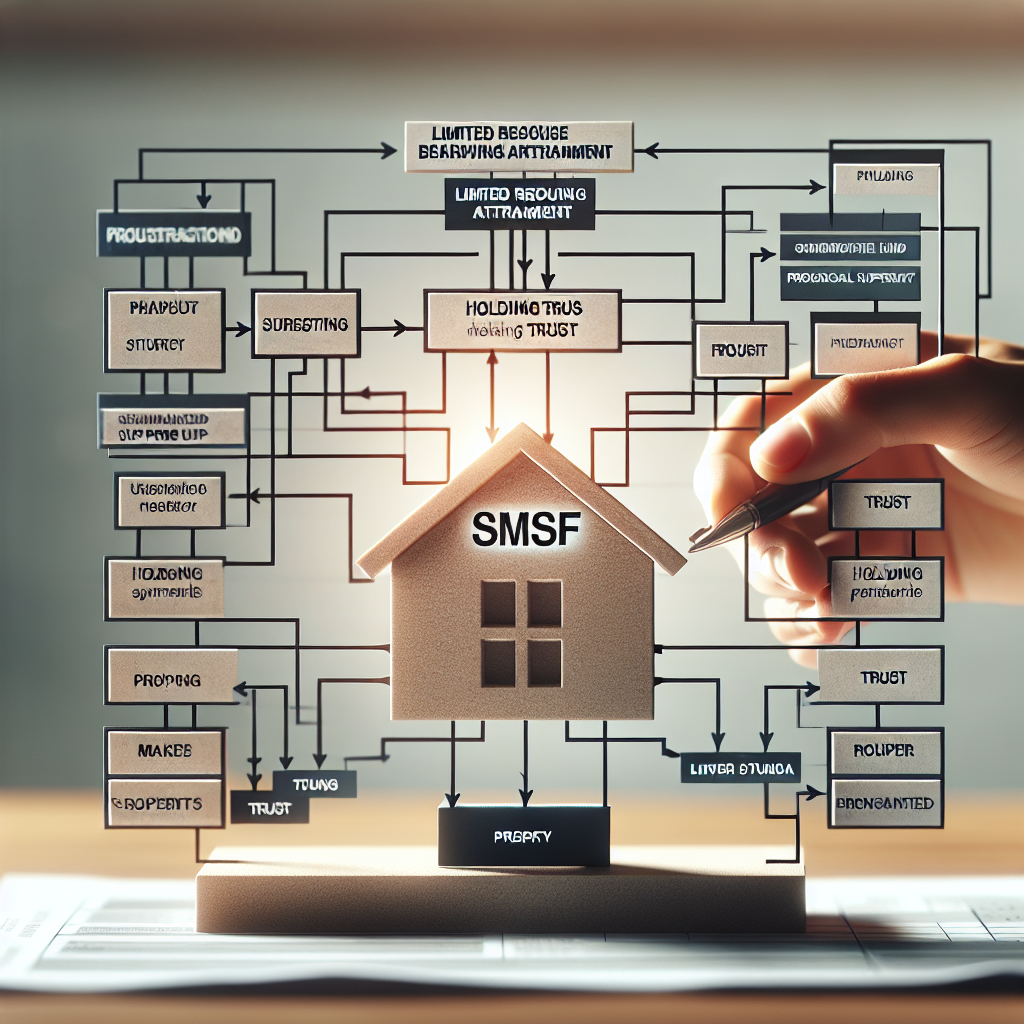In the landscape of retirement planning, property investment through a Self-Managed Super Fund (SMSF) represents a powerful strategy for building wealth. However, the success of this approach hinges significantly on one critical factor: securing favorable SMSF home loan rates. With the right loan structure and competitive interest rates, your SMSF property investment can become a cornerstone of your retirement strategy. Conversely, unfavorable loan terms can erode your returns and potentially derail your retirement plans.
For SMSF trustees and property investors looking to leverage their super funds for real estate acquisitions, understanding the nuances of SMSF home loan rates is not just beneficial—it’s essential. These specialized loans open doors to investment opportunities that might otherwise remain closed, allowing fund members to strategically diversify their retirement portfolios through carefully selected property assets.
Understanding SMSF Home Loans: The Fundamentals
At their core, SMSF home loans are specialized lending products designed specifically for Self-Managed Super Funds to purchase investment properties. Unlike conventional mortgages, these loans operate within the strict regulatory framework governing superannuation in Australia.
SMSF home loans function through what’s known as a Limited Recourse Borrowing Arrangement (LRBA). Under this structure, the property is held in a separate trust, and if the SMSF defaults on the loan, the lender’s rights are limited to claiming against that specific property asset. This crucial feature protects other assets within your super fund from being seized in case of default.
These loans can be used to purchase residential or commercial properties, but importantly, they must align with the “sole purpose test”—meaning the investment must be primarily aimed at providing retirement benefits to fund members. This is why you cannot purchase a holiday home or a property for personal use through your SMSF loan.
For retirement planning, SMSF home loans provide a strategic avenue to potentially enhance returns through:
- Capital growth of the property over time
- Rental income that contributes to the fund’s cash flow
- Tax advantages specific to the superannuation environment
- Portfolio diversification beyond traditional super investments like shares and cash
Current Market Rates for SMSF Home Loans
In today’s market, SMSF home loan rates typically sit higher than standard residential mortgages, reflecting the additional complexity and perceived risk associated with these lending arrangements. As of 2023, competitive SMSF home loan rates start from approximately 6.74% per annum, with many lenders offering rates above 7.00% depending on various factors.
For example, loans.com.au currently offers SMSF loans starting from 6.74% p.a., while some commercial SMSF loans begin at around 7.44% p.a. These rates represent a premium of roughly 1-2 percentage points above standard residential mortgage rates, which is typical for the SMSF lending space.
Several key factors influence the SMSF home loan rates you might be offered:
Loan-to-Value Ratio (LVR): Most lenders cap SMSF loans at 70-80% LVR, with the most competitive rates typically available for loans with lower LVRs (often 70% or less). This means you’ll need a substantial deposit from your SMSF to secure the best rates.
Property Type: Residential properties generally attract lower rates than commercial properties, which are considered higher risk.
Loan Size: Many lenders have minimum loan amounts (often around $150,000) and maximum limits (commonly up to $2,000,000), with different rate tiers based on loan size.
Fixed vs. Variable: As with standard mortgages, fixed-rate SMSF loans may offer lower initial rates but less flexibility than variable options.
It’s worth noting that following recent Reserve Bank of Australia cash rate movements, we’re seeing some adjustment in SMSF home loan rates across the market, though these loans remain less responsive to cash rate changes than standard residential mortgages.
Key Features of SMSF Loans: What Makes Them Unique
SMSF home loans come with distinctive features designed to balance regulatory compliance with investment flexibility. Understanding these features is crucial for making informed borrowing decisions that align with your retirement strategy.
Maximum Borrowing Capacity
While traditional mortgages might allow borrowing up to 95% of a property’s value, SMSF loans are more conservative. Most lenders cap SMSF borrowing at 70-80% of the property value, requiring a minimum deposit of 20-30% from your fund’s existing assets. This conservative approach helps ensure your super fund maintains adequate diversification and doesn’t become over-leveraged in a single asset class.
For example, a property valued at $750,000 would typically require your SMSF to contribute between $150,000 and $225,000 as a deposit, depending on the maximum LVR offered by your lender.
Refinancing Options
Refinancing existing SMSF loans has become more accessible in recent years, though options remain more limited than with standard mortgages. Current market data shows that SMSF refinancing is available through select lenders, allowing trustees to potentially secure better rates or loan features after the initial loan period.
However, as one lender notes, “You can’t borrow more or less than what is owing on your current SMSF loan” when refinancing. This restriction aligns with the regulatory requirement that SMSF borrowing must strictly adhere to the original asset’s value.
Cost Structures
SMSF home loans typically come with higher establishment fees, ongoing fees, and legal costs compared to standard mortgages. These additional costs reflect the complex legal structure required for LRBA compliance.
Common fees include:
- Establishment fees ranging from $800 to $3,000
- Legal document preparation costs of $1,500 to $3,000
- Higher ongoing annual fees
- Potential bare trust establishment costs of $1,000 to $2,000
These features make SMSF loans particularly attractive to super fund investors who have sufficient assets within their fund, a long-term investment horizon, and a strategic approach to building retirement wealth. The structure aligns perfectly with Aries Financial’s philosophy of providing tailored financial solutions that empower investors to make strategic decisions aligned with their retirement goals.
Eligibility and Compliance: Navigating ATO Requirements
Successfully implementing an SMSF home loan strategy requires strict adherence to Australian Taxation Office (ATO) regulations. Failing to comply with these requirements can result in severe penalties, including the potential for your fund to be deemed non-compliant, leading to significant tax consequences.
Key Compliance Requirements
The ATO outlines several critical compliance areas for SMSF loans:
Single Acquirable Asset Rule: Each LRBA must be used to purchase a single asset, such as a single property. You cannot use one loan to purchase multiple properties.
Sole Purpose Test: The property investment must be made primarily to provide retirement benefits to fund members, not to provide current-day benefits.
Arm’s Length Transactions: All arrangements must be established and maintained on commercial terms, including interest rates, loan terms, and LVR.
No Related Party Living: Generally, SMSF property cannot be lived in or rented by fund members, their families, or related parties.
Proper Documentation: The ATO requires SMSFs to maintain accurate records for at least five or ten years (depending on the type), including financial statements, tax returns, member contributions, and investment strategy documentation.
As one ATO representative noted, “We focus on encouraging trustees to comply with superannuation laws by helping them understand their obligations.” This approach highlights the importance of staying informed about regulatory requirements and seeking professional advice when necessary.
The compliance landscape changes periodically, with the ATO providing updated guidance based on legislative changes and market developments. Working with advisors who specialize in SMSF lending can help ensure your fund remains compliant while still achieving its investment objectives.
Strategies for Finding the Best SMSF Home Loan Rates
Securing competitive SMSF home loan rates requires a strategic approach and thorough market knowledge. Here are effective strategies for finding rates that support rather than undermine your retirement plans:
Compare Multiple Lenders
The SMSF lending market features significant variation in rates and terms. While major banks offer SMSF loans, some of the most competitive rates come from specialized non-bank lenders who focus specifically on the SMSF market. Taking time to compare at least 3-5 different lenders can reveal rate differences of 0.5% or more—a significant saving over the life of your loan.
For example, comparing current offers shows that while one lender might offer rates starting at 6.74% p.a., others may start at 7.44% p.a. or higher for similar loan structures. This difference of 0.7% on a $500,000 loan could save your SMSF approximately $3,500 in interest payments annually.
Consider Loan Features Beyond the Rate
While securing a competitive interest rate is important, equally valuable are loan features that provide flexibility and potential cost savings:
- Offset accounts: Some SMSF loans offer offset facilities that can reduce interest payments
- Redraw facilities: These allow access to additional payments made above the minimum requirement
- Fixed vs. variable options: Depending on your investment strategy, locking in a fixed rate might provide certainty
- Interest-only periods: These can help manage cash flow in the early years of the investment
Consult with Mortgage Brokers and Financial Advisors
The specialized nature of SMSF lending makes professional advice particularly valuable. Mortgage brokers with SMSF lending expertise can access a wide range of loan products, including some not directly available to the public. Similarly, financial advisors can help ensure your borrowing strategy aligns with your overall retirement planning goals.
A skilled broker can save your SMSF thousands of dollars by navigating the complex eligibility requirements of different lenders and identifying the most suitable products for your specific situation. They can also help structure your loan application to maximize your chances of approval at favorable rates.
This approach to finding the best SMSF home loan rates aligns perfectly with the philosophy of empowerment and informed decision-making. By taking control of the comparison process and seeking expert guidance, you position your SMSF to make strategic property investments that genuinely enhance your retirement prospects rather than placing them at risk.
Conclusion: Building Retirement Wealth Through Strategic SMSF Borrowing
Navigating SMSF home loan rates successfully can make the difference between a property investment that boosts your retirement savings and one that creates unnecessary financial stress. By understanding the unique features of SMSF loans, staying compliant with regulatory requirements, and implementing smart strategies for securing competitive rates, you can harness property investment to strengthen your retirement position.
The current market offers SMSF trustees a range of borrowing options, with rates starting from around 6.74% for residential properties and 7.44% for commercial properties. While these rates sit above standard residential mortgages, the potential benefits of property investment within the superannuation environment—including tax advantages and portfolio diversification—can make strategic borrowing worthwhile for many investors.
Remember that the most successful SMSF property investors approach borrowing as one component of a balanced retirement strategy. They maintain adequate diversification, ensure their fund has sufficient liquidity to meet obligations, and regularly review their loan arrangements to ensure they remain competitive.
As you consider SMSF property investment, leverage your knowledge of current rates and lending conditions, seek professional advice when needed, and maintain a long-term perspective focused on sustainable retirement outcomes. With careful planning and informed decision-making, your SMSF home loan can become a powerful tool for building the retirement lifestyle you envision, rather than an obstacle to your financial security.
By approaching SMSF home loan rates with this level of strategic thinking and market awareness, you embody the principles of integrity and expertise that define successful self-managed super fund investing—making decisions today that will pay dividends throughout your retirement years.


